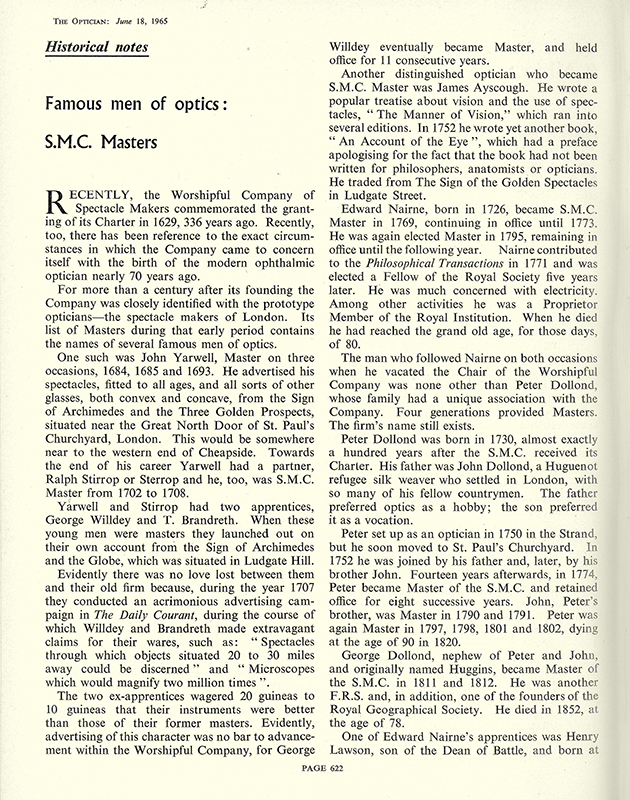Livery companies have a proud history and traditions. Their survival has been achieved by fostering their professions, crafts and trades in a wide context, serving the community and promoting modern skills and professional development their fields.
Many of the most notable names in optics have been made masters of the Worshipful Company of Spectacle Makers over the years and a historical notes section in the June 18 edition of Optician from 1965 details some of the luminaries and even the acrimony – right back to the 17th century.
John Yarwell was a master of the company on three occasions in the 17th century. He was made spectacle frames from horn, steel, tortoiseshell and leather and his work was popular with wealthy patients that could afford luxury materials. Microscopes and telescopes also formed a significant part of work – as was the case of many opticians of the time.
Register now to continue reading
Thank you for visiting Optician Online. Register now to access up to 10 news and opinion articles a month.
Register
Already have an account? Sign in here

